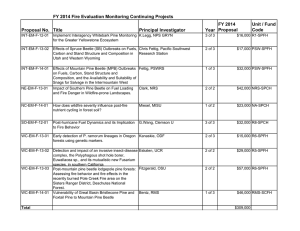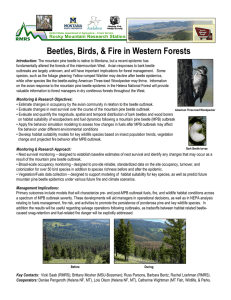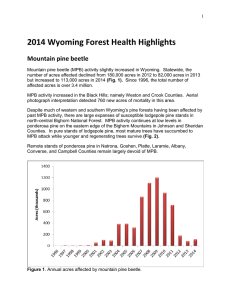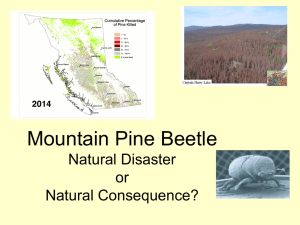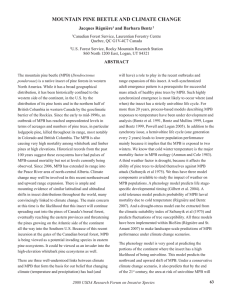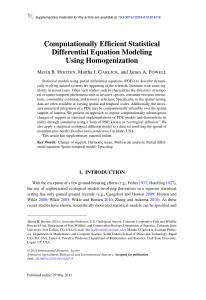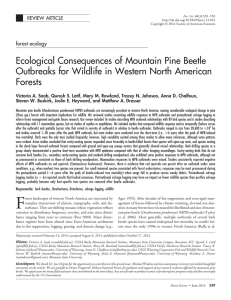Genetic and Phenotypic Resistance in Lodgepole Pine to Attack by Mountain
advertisement
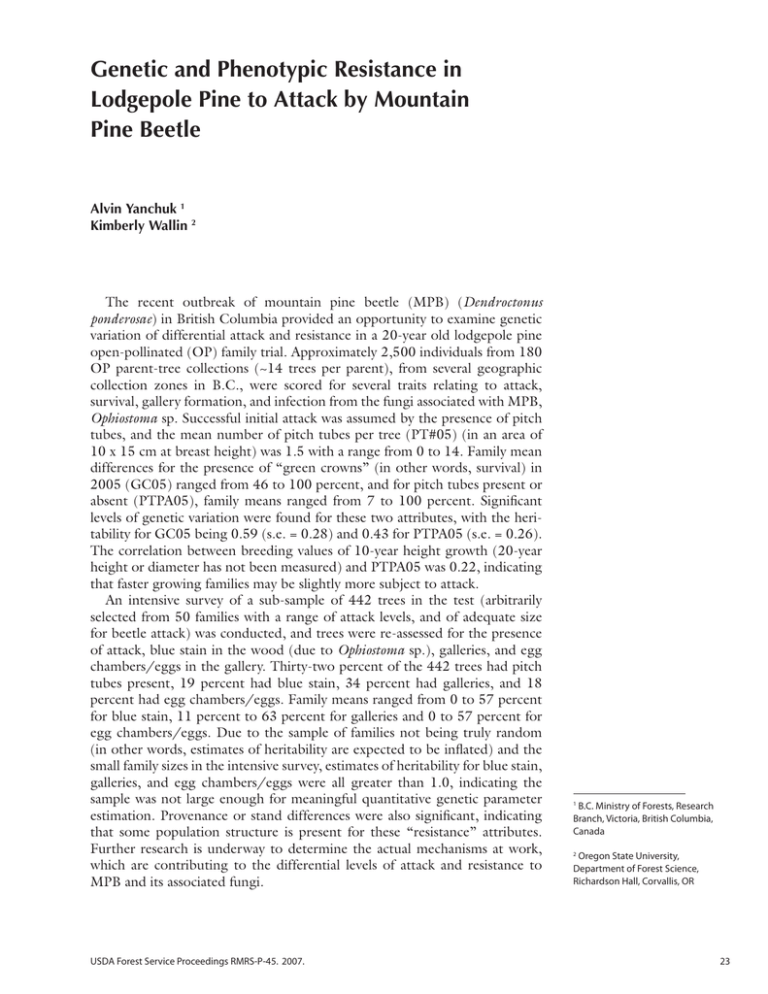
Genetic and Phenotypic Resistance in Lodgepole Pine to Attack by Mountain Pine Beetle Alvin Yanchuk 1 Kimberly Wallin 2 The recent outbreak of mountain pine beetle (MPB) (Dendroctonus ponderosae) in British Columbia provided an opportunity to examine genetic variation of differential attack and resistance in a 20-year old lodgepole pine open-pollinated (OP) family trial. Approximately 2,500 individuals from 180 OP parent-tree collections (~14 trees per parent), from several geographic collection zones in B.C., were scored for several traits relating to attack, survival, gallery formation, and infection from the fungi associated with MPB, Ophiostoma sp. Successful initial attack was assumed by the presence of pitch tubes, and the mean number of pitch tubes per tree (PT#05) (in an area of 10 x 15 cm at breast height) was 1.5 with a range from 0 to 14. Family mean differences for the presence of “green crowns” (in other words, survival) in 2005 (GC05) ranged from 46 to 100 percent, and for pitch tubes present or absent (PTPA05), family means ranged from 7 to 100 percent. Significant levels of genetic variation were found for these two attributes, with the heritability for GC05 being 0.59 (s.e. = 0.28) and 0.43 for PTPA05 (s.e. = 0.26). The correlation between breeding values of 10-year height growth (20-year height or diameter has not been measured) and PTPA05 was 0.22, indicating that faster growing families may be slightly more subject to attack. An intensive survey of a sub-sample of 442 trees in the test (arbitrarily selected from 50 families with a range of attack levels, and of adequate size for beetle attack) was conducted, and trees were re-assessed for the presence of attack, blue stain in the wood (due to Ophiostoma sp.), galleries, and egg chambers/eggs in the gallery. Thirty-two percent of the 442 trees had pitch tubes present, 19 percent had blue stain, 34 percent had galleries, and 18 percent had egg chambers/eggs. Family means ranged from 0 to 57 percent for blue stain, 11 percent to 63 percent for galleries and 0 to 57 percent for egg chambers/eggs. Due to the sample of families not being truly random (in other words, estimates of heritability are expected to be inflated) and the small family sizes in the intensive survey, estimates of heritability for blue stain, galleries, and egg chambers/eggs were all greater than 1.0, indicating the sample was not large enough for meaningful quantitative genetic parameter estimation. Provenance or stand differences were also significant, indicating that some population structure is present for these “resistance” attributes. Further research is underway to determine the actual mechanisms at work, which are contributing to the differential levels of attack and resistance to MPB and its associated fungi. USDA Forest Service Proceedings RMRS-P-45. 2007. B.C. Ministry of Forests, Research Branch, Victoria, British Columbia, Canada 1 Oregon State University, Department of Forest Science, Richardson Hall, Corvallis, OR 2 23

